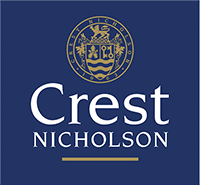Frequently Asked Questions
Did you know according to the Building Research Establishment, energy use in buildings is responsible for around 50% of total UK emissions of carbon dioxide, virtually as much as industry and transport combined. So as well as creating new energy efficient buildings, architects and specifiers bear the responsibility for selecting building components which use the least energy in their production.
1. Wood is carbon neutral because trees absorb CO2 as they grow. In fact, because of the Carbon Sink effect of forests, wood from sustainably managed forests can actually be better than carbon neutral.
2. Wood has the lowest embodied energy of any mainstream building material. Compared to sawn softwood the amount of energy required to produce other materials are as follows. A ton of bricks requires four times, concrete five times, steel six times and aluminium 126 times.
3. Europe’s forests are growing by over 1,500,000 acres every year the equivalent of three football pitches every hour.
4. Timber certification now allows consumers to select timber from these sustainably managed forests and follow its path along the supply chain.
5. Over 97% of the softwood used in the UK comes from European forests.
6. Trees absorb one tonne of C02 and produce three quarters of a tonne of oxygen for every cubic meter grown.
7. Using Softwood Timber Cladding on a typical three bedroom house can reduce the C02 footprint of the house by 2.4 tonnes.
8. Wood is waste efficient. Virtually all parts of a tree can be utilised. Even waste products are converted into particleboard and chipboard. Wood is recyclable, it can be disposed of safely and it is biodegradable.
9. Wood is available in a wide variety of densities, colours, strengths and sizes. The technical performance of timber is covered by many British Standards and readily available technical data.
10. The cellular structure of wood provides good thermal insulation. The equivalent thickness of wood is 15 times better as an insulator than concrete, 400 times better than steel and 1770 times better than aluminium. For example a 2.5cm board has a better resistance to the loss of heat than 11.4cm brick wall.
As trees need little more than sunlight and rainfall to grow, wood from sustainably managed forests is not just carbon neutral, its carbon positive.
The UK Government has signalled its intention to include sustainable forestry as part of its larger strategy to address climate change.
This depends on the species you are considering.
All timber procured by NORclad is sourced from countries where both legal and government legislation are in place to ensure sustainable practices, and a large percentage of our products are also FSC, PEFC and CSC certificated.
We are also FSC and PEFC certificated chain of custody holders as well as a members of The Timber Trade Federation and Responsible Purchasing Programme.
This information is for guidance only, and we would suggest you consult with your professional installer, carpenter and builder.
Most cladding is designed for horizontal application, the tongue should be placed at the top with the groove at the bottom.
Cladding should be installed to impregnated battens. The fixing to these battens will be dependent on the type of profile used.
It is critical each board is independently fixed, with 2 fixings for face fixed profiles over 100mm. Profiles up to 100mm can be secret fixed can be installed with 1 fixing per board. For further details and diagrams on these see ‘Minimum Installation Instructions’ in the ‘Download Centre’
This question revolves around what specie of timber you are planning to use. Larch, Douglas Fir and Cedar are naturally moderately durable, most hardwoods are durable, so as a guide these species would not need to be treated. European Redwood and European Whitewood will need to be treated through our NORclad Lite and NORclad Brunnea High Pressure treatment facilities where we can offer a green or brown finish.
We Pressure Treat Timber For Two Main Reasons
– Protection against attack by wood boring beetles or termites
– Protection against fungal decay. The benchmark figure for this is where the moisture content of timber is greater than 20% and remains that way. Under these conditions timber will decay naturally.
Situations Where Timber Should Be Pressure Treated
Logically therefore, timber is required to be pressure treated where it is being used and in carrying out its function, it is subject to attack by insects/termites or it will become wet.
How Should The Timber Be Pressure Treated
When deciding if timber should be treated for a particular end use we must carefully consider what conditions the piece of timber will be subject to during its life. Timber is treated into what are called Hazard Classes and for the end uses we are dealing with the two categories are Hazard Classes 3 and 4. The table below details what end use falls into each Hazard Class.
Hazard Class 3 External Joinery, Fence Rails, Decking, Featheredge, Barge and Fascia Boards, External Cladding, External Joinery
Hazard Class 4 Sole Plates (below DPC), Fence Posts, Stakes, Sleepers, Swimming Pool Surrounds
What Timber Can Be Pressure Treated
Different species of timber are selected depending on end use and different species of timber require pressure treating in different ways. When we pressure treat timber, it is not just a surface coating, the treatment actually goes into the timber. Different species of timber have different cell structures which make some more permeable to preservative treatment than others. It follows that the higher the Hazard Class the more treatment is required to penetrate the timber.
How is Timber Made Up
A piece of timber is made up of two sorts of wood, Sapwood and Heartwood.
– Sapwood is the living part of the tree and has cells which transport the water up and down the trunk of the tree. This is found on the outer most part of the trunk beneath the bark. As it is living, the Sapwood contains food stuffs which are attractive to insects and fungal decay
– Heartwood is the dead part of the tree and the cells have closed up. This is found in the centre of the trunk. This part of the timber does not contain food stuffs and in not attractive to insects or fungal decay.
When we treat timber therefore we are treating the Sapwood otherwise it will deteriorate, also it has open cells which can accept the treatment.
When we treat timber we do not treat the Heartwood as it is naturally durable and the cells a dead and closed so will not accept treatment.
Timber Selection
When selecting a species for a particular end use, we must therefore consider the following:
– How easy it is to treat the Sapwood
– How durable is the Heartwood
Cladding Timber Selection
All the NORclad range requiring pressure treatment is machined from a high quality European Redwood Joinery Timber with a low moisture content. The timber is treated to a Hazard Class 3 and this species is selected due to good treatability of the Sapwood and the natural durability of the Heartwood.
30 Year Warranty
By selecting the correct Species for end use and then Pressure Treating this Species in accordance with the requirements of a Hazard Class 3 process, all pressure treated cladding in the NORclad range can be offered with a 30 year Warranty against rot and fungal decay. Please see the Warranty Statement.
We produce a range of vertical and horizontal cladding solutions, which can be face fixed or secret nailed. Our profile standard range is extensive with T & G, Overlap, PTGV jointed matchings to a number of finishing fillet solutions.
We can also offer a bespoke profile service where we can match a whole host of profile pattern and finishing solutions.
All our cladding products conform to the European standard for timber claddings. This standard in summary is as follows: Quality of timber (exposed surfaces): To EN 14915/EN 15146/EN 14519 – NORclad timber cladding is produced in accordance with factory production control for the selection, grading, machining and preservative treatment of solid wood cladding. Often also referred to under the classification of the British Standard 1186-3 Section 4.
FSC stands for Forest Steward Council
PEFC stands for Programme for the Endorsement of Forest Certification
Both of the above organisations are the umbrella bodies in Europe that are involved in guaranteeing that timber comes from a sustainable source.
Chain of Custody certification, is an assessment from an independent , qualified and accredited expert who verifies in writing that the wood flow system applied by a business traces the flow of wood from certified forests through the business and meets the exacting requirements of the certification scheme.
In short Chain of Custody certification monitors the amount of timber a company buys from sustainable and well managed sources. It traces and records the movement of all timber through the business and when the timber package is then sold to customers, it confirms all procedures have been followed by issuing an FSC and/or PEFC number on all document.
1. The pressure treatment process begins with untreated wood products being transferred into a treatment cylinder. Once the wood is inside the treating cylinder, the door is closed and sealed, and a computerised process control system starts the pressure treatment process.
2. The first step in the treatment process begins when a vacuum pump removes the air from the treating cylinder. This opens the cells in the timber by taking the air out of them.
3. When the vacuum step is complete, the next step of the process is transferring the treatment solution from the storage tank into the cylinder.
4. Once the cylinder is full with treatment solution, the next step is to pressurise the cylinder using a pressure pump. The increased pressure in the cylinder forces the treatment solution into the wood through the open cells.
5. When the pressure cycle is complete, the next step is to transfer the remaining treatment solution back into the storage tank.
6. The final step in the pressure treatment cycle is to initiate a final vacuum.
7. Once the final vacuum step is complete, the cylinder door is opened and the pressure treated wood is removed from the treatment cylinder and the process is finished. The wood is then stored in a drip area to dry.














































